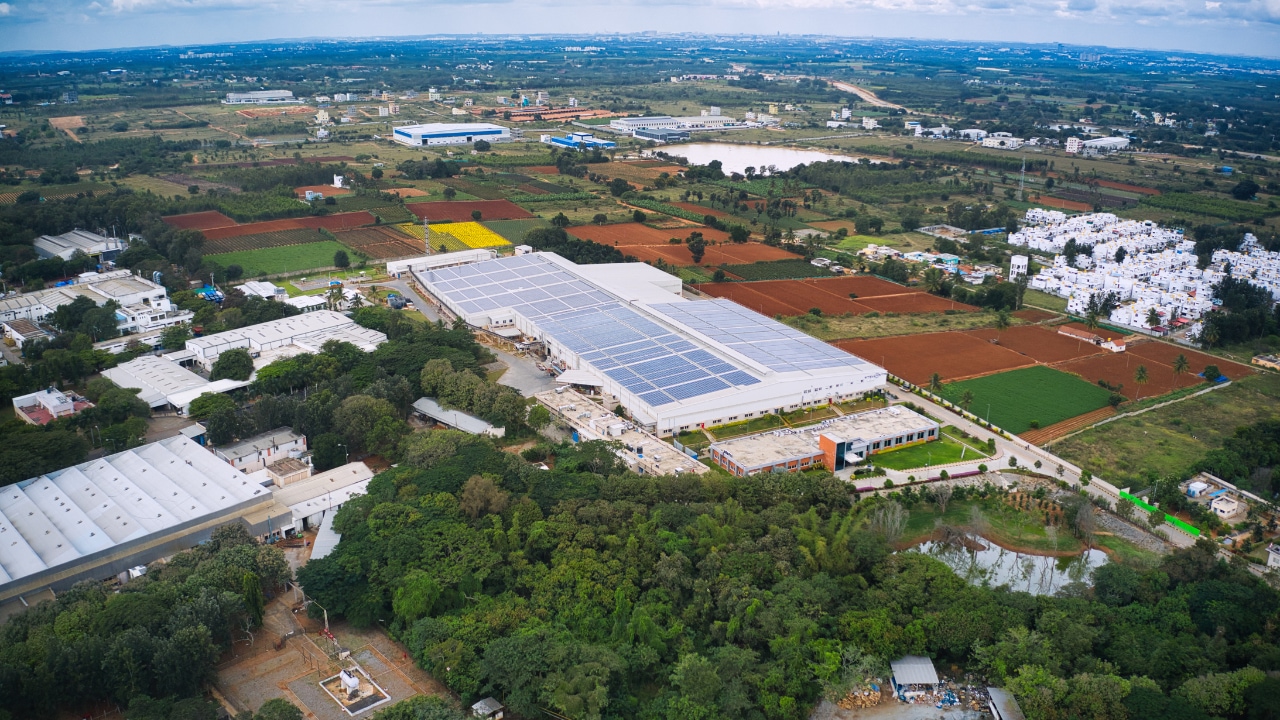That early focus on building capability, machining, supplier development, quality, and a culture of hands-on technical training, shaped the backbone of its India operations. The Hosur powertrain plant, operational since 2017, stands today as the most visible expression of that strategy, emerging as a critical node in the group’s global engine and transmission network.
A long and layered India legacy
Stellantis’ footprint in India is shaped by a long manufacturing lineage that began in the Fiat era, when powertrain production formed the backbone of the company’s local operations. Fiat’s engine programmes helped establish one of India’s earliest high-precision supplier bases, supported by dedicated machining lines, training systems and long-term component partnerships. This ensured continuity as the organisation transitioned from Fiat to FCA and later to Stellantis, with powertrain remaining the most stable element of its India strategy.
Through this legacy, India evolved into a consistent manufacturing contributor for global engine and transmission programmes. The experience built over decades, including supplier relationships and workforce capability, created the conditions for Stellantis to elevate India into a key node within its international powertrain network. The Hosur plant, which came online in 2017, was a direct extension of this approach, designed from the outset to serve both domestic and export demand, while operating to global quality, testing and process standards.
(Also read: Long-term policy continuity and uniformity essential for Indian auto industry’s growth: Stellantis India CEO)
A powertrain campus built for scale
Spread across 110 acres, the Hosur facility produces three engine families – the 1.2-litre naturally aspirated petrol, the 1.2-litre turbo-petrol (Gen-3) and the 2.0-litre SDE diesel, along with multiple manual transmission variants (6-speed and 5-speed families). Nearly 95 per cent of the output is exported, supplying more than 20 markets across Europe, Turkey, the Middle East and Latin America. In total, Hosur’s engine and gearbox lines account for around 5 per cent of Stellantis’ global powertrain volumes.
The plant turns out close to 350,000 transmissions a year, a number that says as much about scale as it does about how much of the work happens under one roof. Most of the machining and assembly is done in-house, supported by a vendor ecosystem that has grown with the factory. 300 engine parts and 120 gearbox components come from suppliers who have been stitched into the operation over time. It’s this depth that helps the plant maintain high localisation: the engine shop runs on a 60:40 local-to-import ratio, and the gearbox line isn’t far off.
Operational efficiency and process discipline
The way the lines are set up also reflects a very Indian balance between efficiency and practicality. Stellantis has opted for a semi-automatic layout, not fully manual, not fully robotic, which gives operators room to adapt while keeping the rhythm of automation intact. The result is a line that runs 50-60 per cent more efficiently than a purely manual setup, yet remains quicker to reconfigure than the fully automated European systems it is benchmarked against. Lead times tell the same story: gearbox assembly at Hosur is typically wrapped up four to five months faster than at many of the company’s other global plants, a quiet indicator of how the processes here have matured.
Testing capability has expanded in line with production needs. Stellantis was an early adopter of cold-test technology in India, developing its system in just two months, compared to the five months these projects usually require elsewhere. Today, 60 percent of engines undergo cold testing, with the remaining units validated through mandatory hot tests.
Workforce, skills and local impact
Hosur’s workforce profile reflects the plant’s dual role as a high-precision manufacturing site and a regional employer. The site directly employs roughly 1,500 people, drawn from 16 Indian states, with women comprising about 18 percent of the workforce. Stellantis estimates the plant supports over 5,000 direct and indirect jobs in the surrounding economy through supplier activity, logistics and services.
Skill development is embedded into the Hosur model. The internal training institute records a 95 per cent first-attempt pass rate for trainees; new recruits receive two weeks of structured on-job and classroom training, while team leaders undergo a three-month development track.
The plant currently operates three shifts with 33 trained team leaders (about 11 per shift), and offers more than 150 hours of training per operator annually. These investments are aimed at creating steady shop-floor competency that can meet global quality benchmarks and support increasingly complex validation tasks.
Beyond employment, the plant runs community and CSR programmes focused on STEM education, school infrastructure and road safety, actions the company frames as part of its local integration strategy.

Sustainability integrated into operations
Sustainability is a core operating principle. Rooftop solar systems cover all buildings except the administrative block; the site draws 92 per cent of its energy from renewables, 74 per cent wind and 18 per cent solar. With 2 MW of solar PV installed and another 1.3 MW under deployment, the plant saved 10,622 tonnes of CO₂ in 2024, equivalent to planting 136,000 trees. The 2025 target is to save over 14,000 tonnes of CO₂ (around 180,000 trees equivalent). The plant’s gearbox operations already register the lowest energy consumption per unit within the Stellantis network; the engine line ranks second, with plans to reach benchmark status by 2025.
Part of a global powertrain network
Stellantis operates 44 engine and transmission plants worldwide. Within that network, Hosur’s mix of scale, localisation and technical capability positions it among the group’s more competitive sites. Company briefings describe Hosur as comparable in capacity to roughly 45-50 per cent of many plants elsewhere, an indication of its outsized role considering the breadth of the group’s footprint.
Hosur’s output accounts for about 5 per cent of Stellantis’ global powertrain volumes for the engine and gearbox families it produces. That share is significant given the company’s multi-brand portfolio and the declining number of plants dedicated to ICE as the group reallocates resources toward electrification in other regions.
Platforms, India-created IP and exports
India’s engineering footprint is visible beyond manufacturing. The Smart Car platform, developed in India, underpins the Citroen C3, eC3, Aircross and the Basalt; it is exported to multiple markets where the platform’s cost-and-feature balance is a fit. Beyond this, the powertrain and gearbox supplies from India also power several of the global models based on the STLA Small and STLA Medium platform cars along with Stellantis Van platform vehicles. Several components are also destined for the STLA Large EV architecture are also being sourced from Indian suppliers, indicating a two-way flow of capability from India to Stellantis’ EV ambitions.
Export performance is a central plank of the Hosur story: from a current export contribution of roughly ₹4,000 crore, Stellantis targets ₹10,000 crore by 2026, with Hosur as a major contributor to that growth.
Retail strategy and market positioning
On the commercial front, Stellantis is building its retail network in India in parallel with manufacturing growth. Citroen aims to scale from 80 to 130 touchpoints in FY26, Jeep maintains a target around 78, and the group is expanding service reach to 135 centres, adding 7-8 touchpoints per month. The combined network currently covers 69 per cent of the addressable market.
A plant built for today, aligned for tomorrow
While Hosur retains a central role in ICE production, the facility and India’s supplier base are being oriented to a multi-energy future. Stellantis is running hydrogen pilots in Europe and assessing how hydrogen-adapted combustion and hybrid architectures can be integrated into existing production flows when market economics and infrastructure permit. In practice, the plant’s process discipline, training systems and engineering presence make it a suitable pivot point should Stellantis decide to scale alternative powertrains from India.
Hosur is more than a factory: it is a functioning link in a global production and engineering system. By producing multiple engine families and transmission variants to global standards, sustaining high localisation, investing in workforce training and delivering measurable sustainability gains, the plant reinforces India’s role in Stellantis’ industrial map. As the automotive sector navigates a multi-speed transition, Hosur provides the group with operational continuity and flexible capacity, qualities that will matter through the next phases of powertrain evolution.
Get insights into Upcoming Cars In India, Electric Vehicles, Upcoming Bikes in India and cutting-edge technology transforming the automotive landscape.
First Published Date: 20 Nov 2025, 15:36 pm IST







